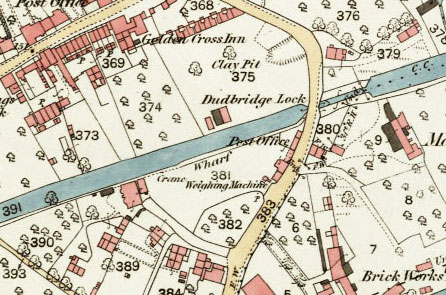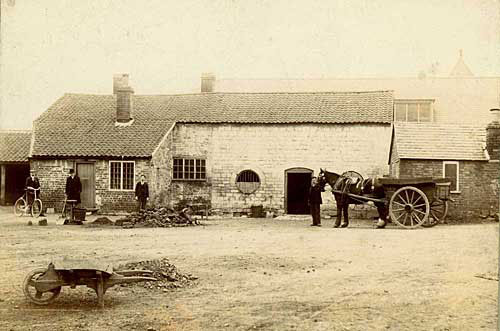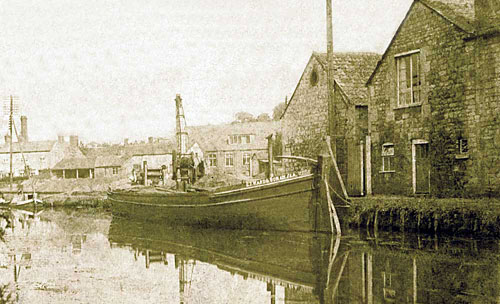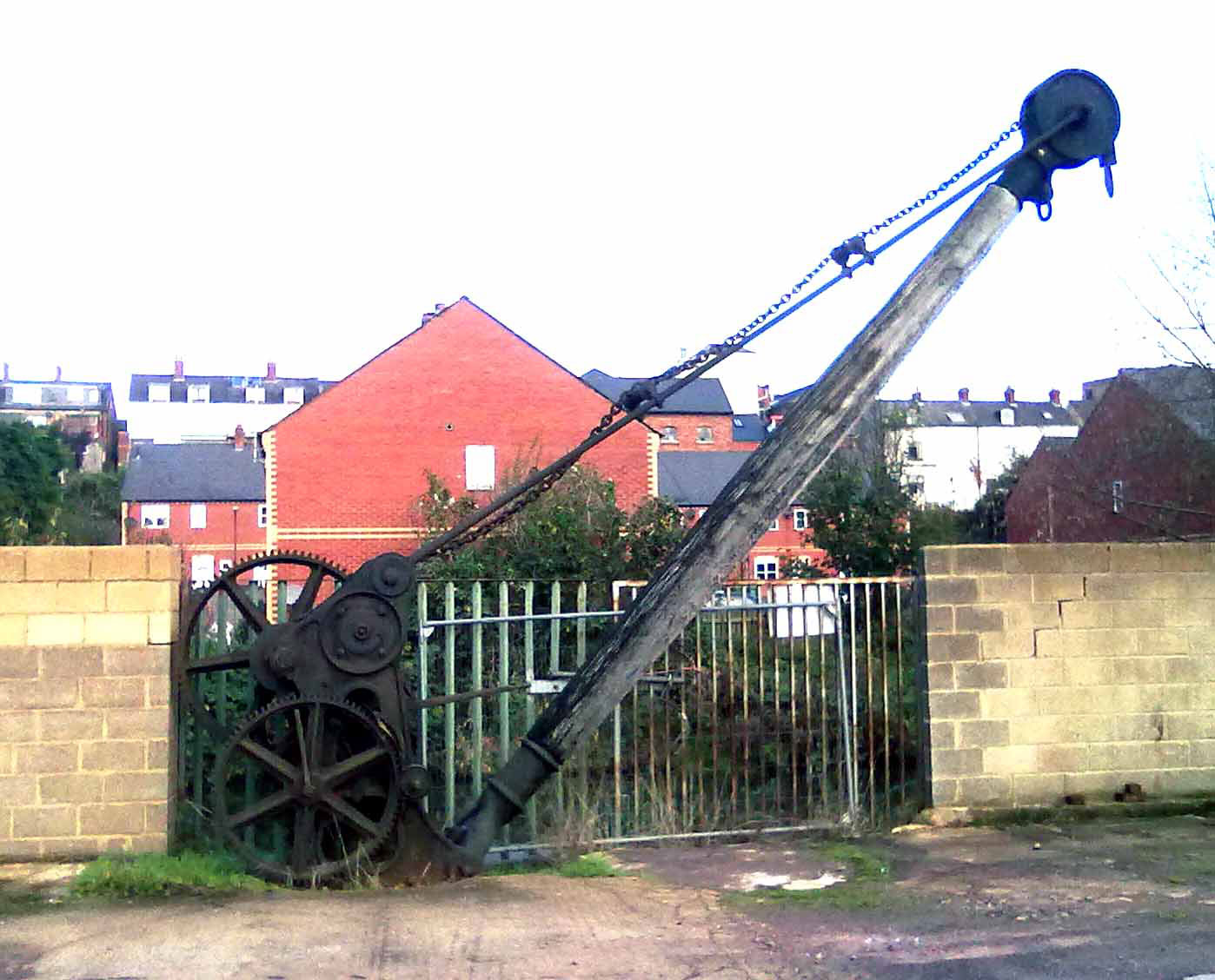

This was the busiest wharf on the canal - serving Dudbridge Mill, Kimmins Mill and other important industries nearby and along the Nailsworth valley to the south.
The wharf was usually leased to a coal merchant who ran his own business and also acted as wharfinger for the Stroudwater Company. In this role, he kept records of all cargoes handled and he collected fees from other traders needing temporary storage space or use of the weighbridge or the crane.
In spite of competition from the railways, the wharf continued to receive coal by water well into the 1930s, and then it became a transport yard. For the launch of a barge at Dudbridge Wharf, visit Teetotal Barge.


The house for the wharfinger had a stable adjoining, and the small building on the right housed the mechanism for weighing a cart on the way in and out of the yard to measure the quantity of goods taken away.
In the 1840s, the wharf house also served as a beer house - until the wharfinger became a leading member of the local temperance society. These buildings have not survived.
The main cargoes handled were coal, stone and timber which were stored temporarily in pens or in piles until they were delivered to a customer. In the early days, there was also a good trade in grain and small packages of other goods which were stored in a warehouse at the west end of the wharf.


The picture shows the barge Ila moored in front of the crane and the gables of the warehouse and of Gladfield House on the right.
The warehouse was used in the early days for storing small packages of goods under cover - until this type of traffic was lost to the railways.
Mounted on the white post can be seen a gate that was closed across the towpath at night and at weekends to prevent unauthorised access to the wharf. This gate is still in situ – as described in the note on Gladfield House.


Remarkably, the wharf crane installed in 1854 still survives in situ, although it now stands on private property.
It was used for lifting loads up to five tons, particularly large baulks of timber. In later years, it also lifted boilers and engines into steamboats built near Hope Mill (on the Thames & Severn Canal) on their way to customers all over the world.
When not in use, the crane served as a popular adventure site for local children, and any boy who managed to climb right to the top of the jib felt he had really 'made it'.
Information about the wharf, wharfingers and cargoes handled from documents in the Archives section of this website.
For more about the crane, visit The Dudbridge Crane
For memories of life around Dudbridge in the 1930s, visit John Stockbridge Remembering Dudbridge.